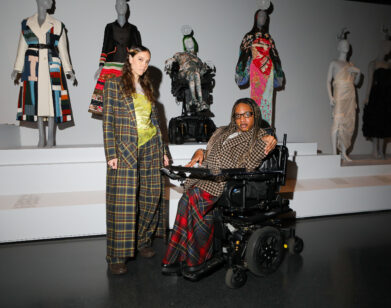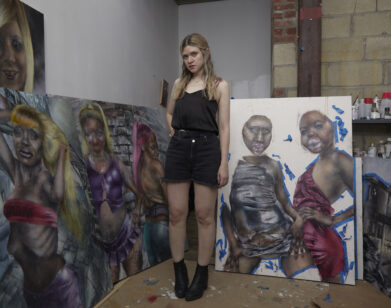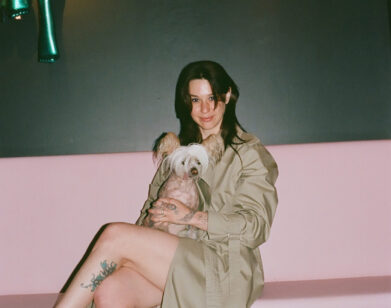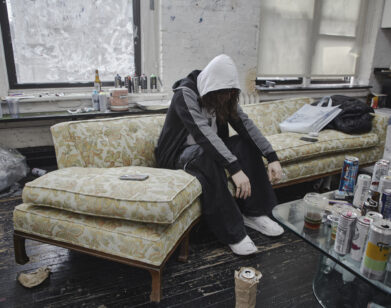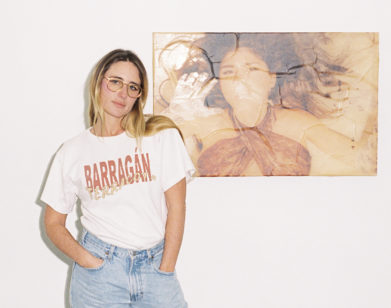art!
Meet the Greek Designers Breathing New Life Into Isamu Noguchi’s Work
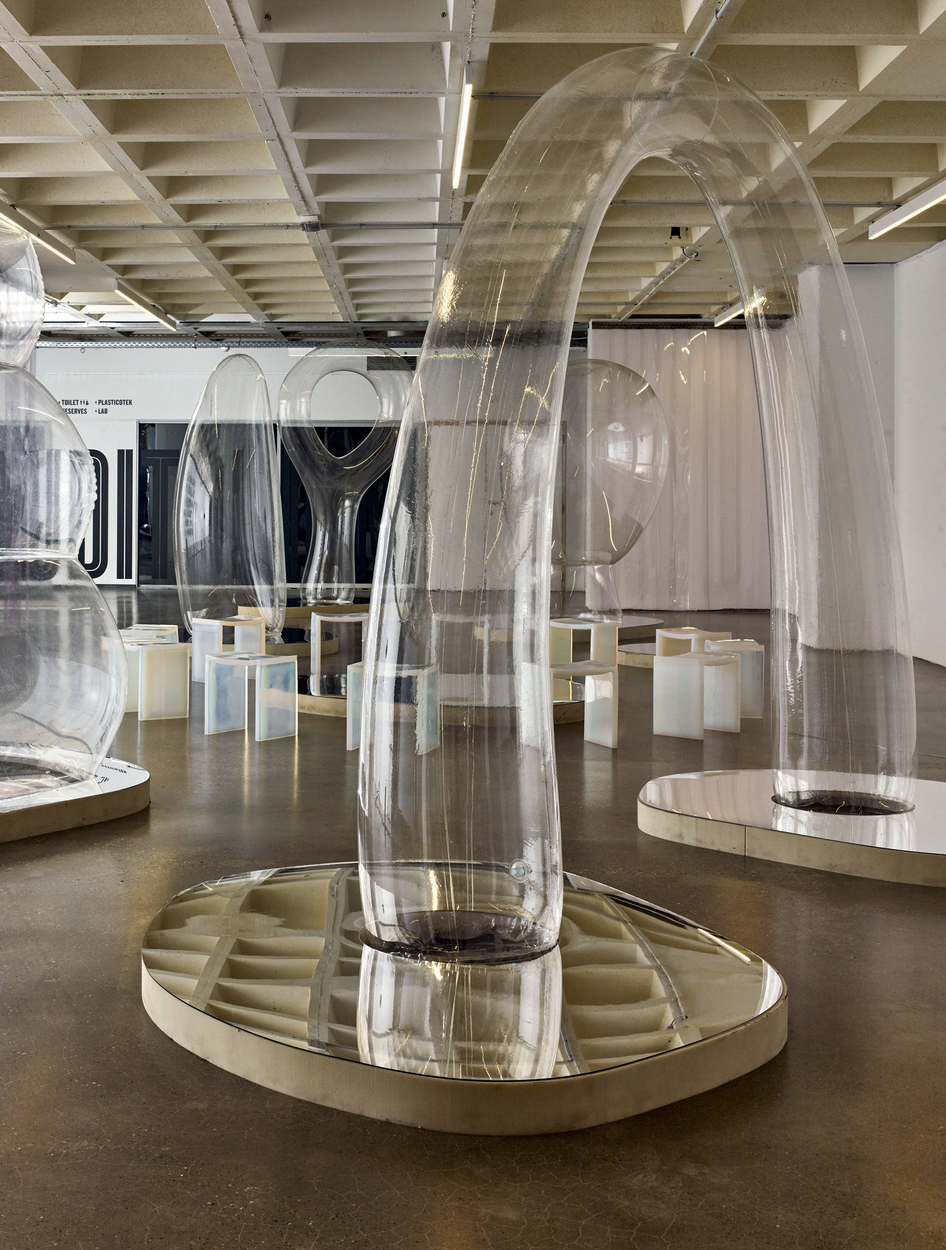
Eleni Petaloti and Leonidas Trampoukis, the co-founders of the design and architecture studio Objects of Common Interest, have a busy year ahead of them. In the past week and a half alone, the Greek artists and collaborators have travelled to galleries and museums in Greece, Italy and The U.S. to oversee their own exhibition openings. The third stop on this wild ride is the Noguchi Museum in Queens, where last week the pair unveiled “Hard, Soft, and All Lit Up with Nowhere to Go,” an immersive architectural experience on the museum’s grounds. Their work, which takes an intimate and intuitive approach to the craft of object making, is inspired by “moments of unfamiliar simplicity,” and adds new dimension to the permanent Noguchi installations on view in the museum. On a quiet day in the Noguchi courtyard, Petaloti and Trampoukis sat down to discuss the experience of presenting art to the public during a pandemic, the joys of an empty museum, and their shared obsession with rocks.
———
INTERVIEW: Have you spent the day installing the exhibition?
PETALOTI: We’ve been installing for a week, and we just opened to the public. It’s not an official opening with lots of people around, because the museum is careful about COVID. It’s nice, because they let very few people come in. It’s a very monitored and strict policy.
INTERVIEW: Do you find that by controlling the environment, people are able to interact with the work differently than if it was crowded and buzzy?
PETALOTI: Totally. I think people feel more relaxed. You have more peace of mind and you have much more physical space to experience the work. A year ago, when we came back from Greece, we started going to museums like crazy. We went to all the places we don’t usually go to because they’re typically full of tourists. We were able to rediscover New York in a different way than before.
INTERVIEW: It’s so hard to interact with space-based, sculptural work when you’re in a zoo-style museum setting. Sometimes at a museum, the other visitors take up as much of your attention as the art does.
PETALOTI: One hundred percent. We’re not industrial designers. It was never our goal to make the perfect chair or sofa. It’s not about perfection. It’s more about evoking a reaction or a feeling. When you come to the museum, the first five seconds that you’re in the space, you might not even notice our pieces. For instance, we decided to make a standing stone next to Noguchi’s standing stone which is made out of transparent acrylic, like a balloon. We’re very intrigued by making things that you might not even notice. If it’s crowded, you’re definitely not going to see our two small rocks. So for us, it’s an abundance of silence.
INTERVIEW: Absolutely. Is all the work that you have installed built around the pre-existing Noguchi work, or is there some sort of separation?
PETALOTI: None of the work is site-specific. We met the senior curator of the museum a couple of years back, when the museum had a bunch of archival material that they couldn’t really put together. They were receiving books from Greek artists. They didn’t know the Greek scene, so they couldn’t put the puzzle together, and for our part we were very intrigued. We had been studying Noguchi since we were students, because we studied architecture in Greece, Paris, and now, here at Columbia in New York. So we spent a couple of days in the archive trying to gather everything. All of a sudden, we were talking about having an exhibition here. We suggested some crazy things and wanted to change the whole museum. It would’ve required moving all of Noguchi’s work. [Laughs] That wasn’t feasible. In May, when things started opening up, we came up with a brilliant exhibition plan.
LEONIDAS TRAMPOUKIS: The layout, the work, text, everything was ready. The lead curator came to our studio and curated our objects, and then we made one or two new things, but not specifically for this exhibition.
PETALOTI: Our objects are in conversation with Noguchi.
TRAMPOUKIS: And with the space itself, not just the works. It’s always about the Noguchi work, and then artists come in and offer a different reading of the space.
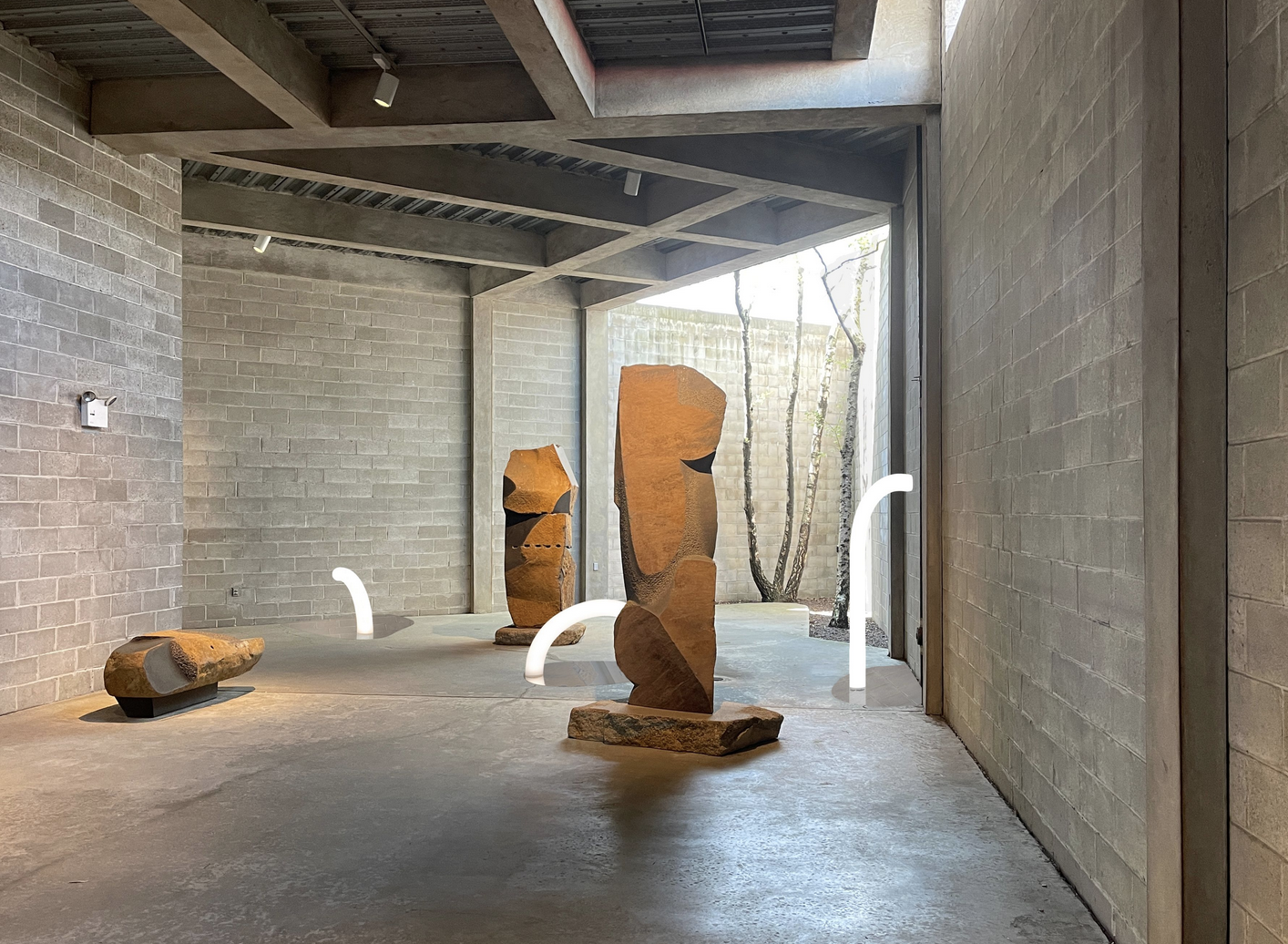
INTERVIEW: Is any of your work appearing to you differently now that you’re seeing it interact with Noguchi?
TRAMPOUKIS: Yes, definitely, especially after having a lot of walkthroughs. We were creating intuitively so hearing people talk about our work is always refreshing. It makes us think about the next project in a certain way.
INTERVIEW: Do you find the relationship between curator and designer a little awkward? Is it strange to you hear a curator ascribe a narrative to your work that you may never have thought of?
PETALOTI: It has to do with the curator. Dakin [Hart] is very gentle and polite.
TRAMPOUKIS: He’s not imposing. We had more space to reflect.
PETALOTI: In this case, it’s not a retrospective, but it’s the first time our work has been presented in this way.
TRAMPOUKIS: It’s not a specific installation that was designed for the space. Everything we’ve done in the past two years is here.
PETALOTI: The works are much more colorful and crazy.
INTERVIEW: What would you say is the central message that emerges through this exhibition?
TRAMPOUKIS: There’s common thread that connects all of our work. There are two ways of reading this exhibition. It could be an exhibition just of our works, meaning there is a common concept between all the works and our process for making them. Or you can look specifically at how they interact with the Noguchi works. Noguchi was working from abstract ideas, without necessarily having a space in mind. It’s the same for us, there’s always an element of interpretation. They are sculptures, objects, and something in between.
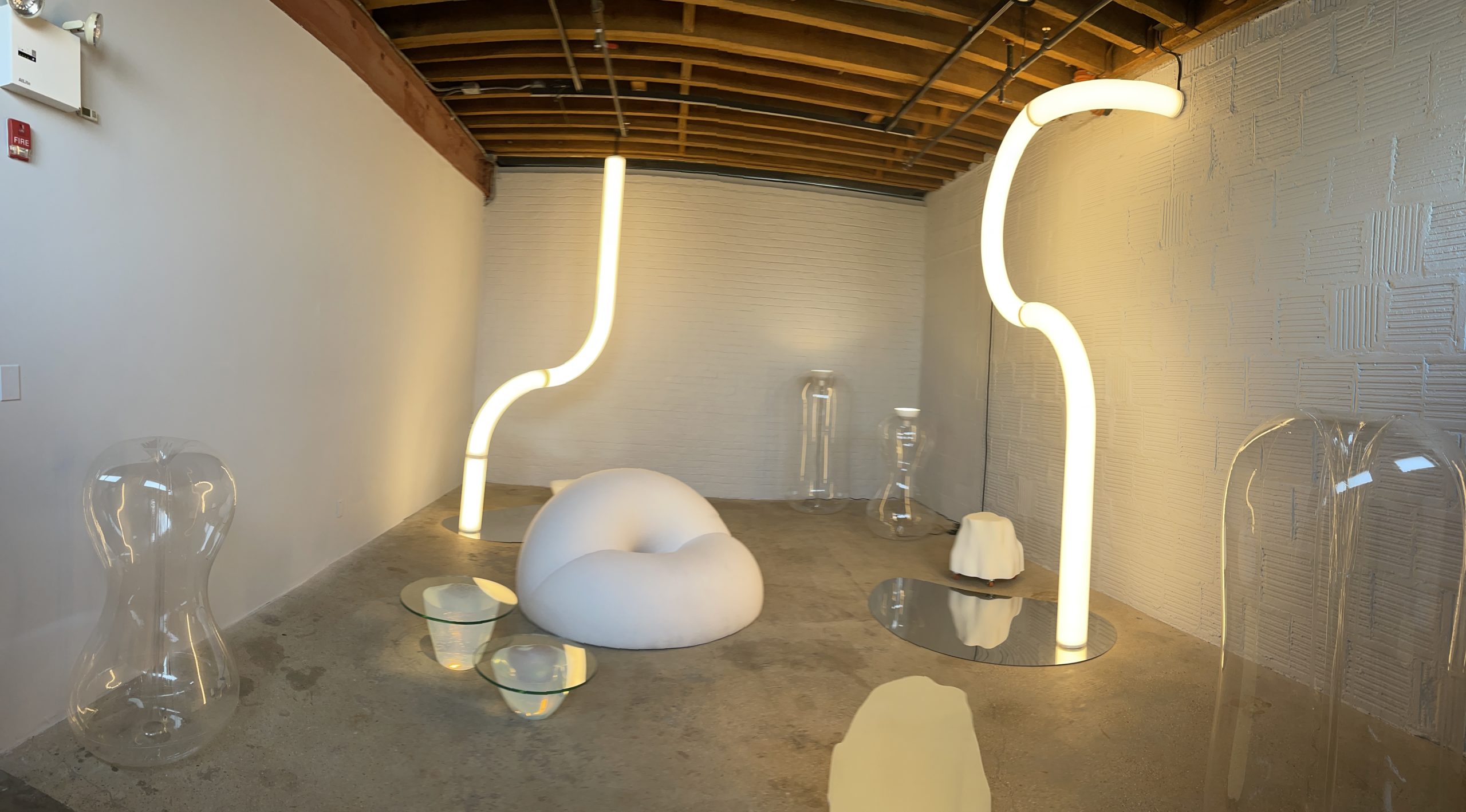
INTERVIEW: Is there a particular piece for each of you that you feel newly in love with now that you’re seeing it in the space?
PETALOTI: I’m obsessed with the latest work that we installed. There are two inflatable lights, which is an homage to the lamp. We have created one single plate that carries the lightbulb and cable. The idea is to create unlimited versions of this inflatable light. Also, a new stool. It’s an acrylic gel stool. We’re presenting it in transparent white. In Copenhagen later this fall, we will present it in more vibrant colors. It’s like you chopped a northern Greek rock, where we’re from. It’s super heavy. It’s my obsession.
TRAMPOUKIS: Things that we’ve worked on in the past year were very inspired by nature. Without thinking, we were creating two or three different projects about stones. One is this in another dimension, one is these inflatables in opal, iridescent acrylic. that were actually named standing stones and what he came out of this idea of logic part and similarly. We were actually making stones that ended up in the museum garden, which is all about stones. With these materials, we weren’t defining them as an object. We were making stone formations. So sitting here next to actual Noguchi stone sculptures blew my mind. It’s a very natural thing to be here. Noguchi tried many times to work with plastic, and it never fit in his language. But here, it’s an immediate contract.
INTERVIEW: What is the most important aspect of this collaboration to you both?
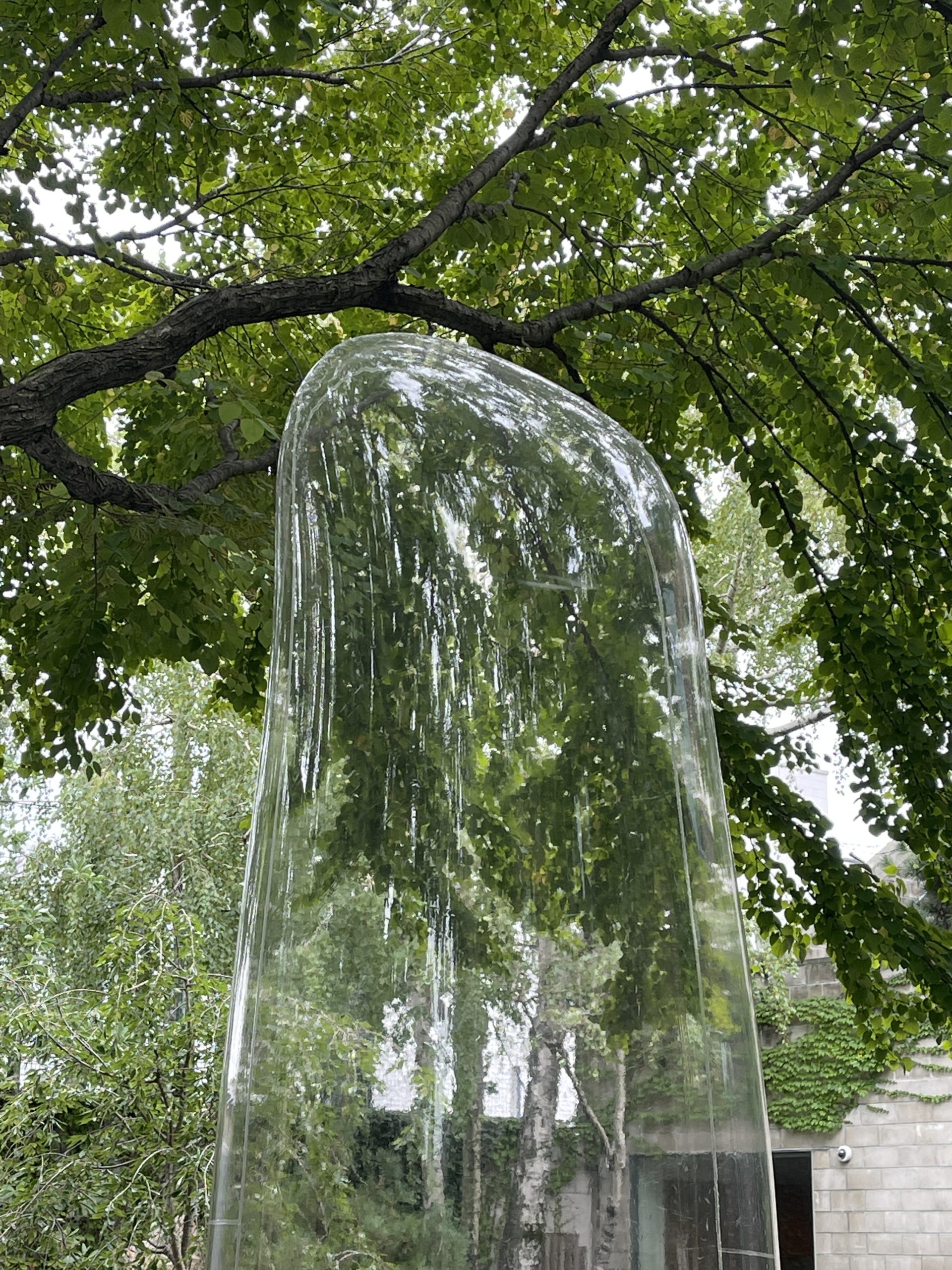
PETALOTI: This was a very intense, very rewarding summer. Greek summer is always a marvelous, relaxed time. But this was totally worth it. We wanted to share this work and we’re so happy with it.
TRAMPOUKIS: These three shows we just opened are all on view at the same time. They’re different projects that but tie all of our work together.
PETALOTI: For a year and a half, we weren’t showing anywhere. Now, it’s a coming back to life experience.
———
On view until February 13, 2022.

